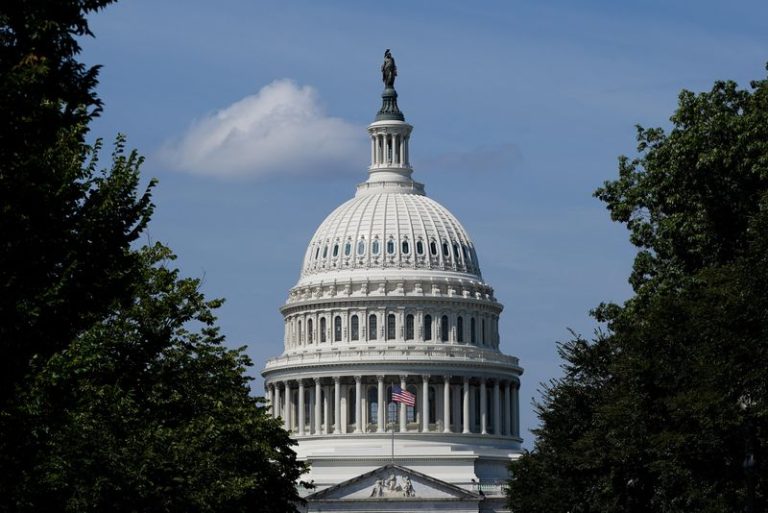By Howard Schneider
WASHINGTON (Reuters) – In another era, agreement among analysts from leading left, center, and right-leaning think tanks over a sweeping plan to address major fiscal and social issues might carry some heft in Washington policymaking.
In today’s culturally infused, party-line politics, when establishment voices particularly among the U.S. Republican party have been sidelined, perhaps not so much.
But after a yearlong debate and analysis, Brookings Institution, Bipartisan Policy Center, and American Enterprise Institute economists and analysts have still given it a shot, outlining a national “grand bargain” addressing everything from immigration and decarbonization to tax and entitlement reform.
Launched on Tuesday with a forum at Brookings, the authors have no illusions about how their plan will be greeted by the incoming Trump administration. While some of the ideas aren’t inconsistent with things the president-elect and his circle often favor, such as expanded school choice, stricter teacher accountability, and regulatory reform, it also recommends things they don’t, such as adopting a carbon tax, a bigger safety net for the poor, a large federal role in building out a decarbonized electric grid, and increased federal taxes as a share of gross domestic product.
The point, said American Enterprise Institute economist Michael Strain, who co-chaired the group along with Brookings senior fellow and social policy expert Isabel Sawhill, was to show compromise across broad principles at least was possible.
“If someone felt that school choice is a huge concession, maybe they feel happy about a carbon tax or a Social Security system that is more generous to elderly Americans in poverty, or higher revenue to GDP,” Strain said. While the document as a whole might be considered a “second- or even third-best” set of solutions viewed from any particular political position, “it does move the country as a whole in a better direction.”
“You want to be clear-eyed and realistic. This is a 100% Republican controlled Congress, and they don’t have a ton of incentives to cooperate,” said Ben Harris, vice president and head of economic studies at Brookings and a former top adviser to President Joe Biden. “This is more a medium-term play. To solve some of the biggest challenges we need bipartisan compromise.”
Harris, who participated in Tuesday’s forum, noted in an interview beforehand the “discomfort” many Democrats would feel around entitlement reform, for example, even as they’d cheer things like expanded school nutrition and richer tax credits for the working poor.
The slate hits enough red lines for one group or another that the title page notes it represents the views “of the individual authors,” not their institutions or the sponsoring organization, the Center for Collective Democracy.
The tradeoffs proposed are often explicit: Less devoted to retirement and health care “for affluent seniors,” for example, in return for greater spending on “vulnerable seniors,” education, and “earnings subsidies for the working poor.”
The spending curves of the major entitlement programs would be bent slowly towards financial sustainability, with a cap on Medicare spending and a Social Security system made solvent and more progressive with a higher retirement age and benefits that grow more slowly for those better off.
Tax increases would be relied on more at first, “phasing into a much larger share of the savings coming from spending cuts over time,” the document states. The “politically broken” income tax system would be changed to encourage investment and discourage consumption, with value added taxes replacing some income taxes, for example, and allowance for businesses to fully deduct investment costs but not interest on debt.
More federal money would be spent on basic research, in hopes of improving the economy’s potential; immigration would increase, but through a doubling of employment-based green cards in hopes of using the system “to increase workforce and economic growth, fuel innovation, and increase the nation’s stock of human capital.”
None of it may gain traction, Strain said, absent a “forcing event” like a sustained rise in government borrowing costs, perhaps, or Treasury auctions that struggle to find buyers.
As current White House Council of Economic Advisers Chair Jared Bernstein said, it seemed to be a “highly rational report in a moment that is perhaps a little less rational.”
But there’s still hope for the center even in polarized times, said G. William Hoagland, a senior vice president of the Bipartisan Policy Center and one of the document’s authors.
The ideas may be “aspirational” in the current environment, he said, but “I would hope that at least some of the policy makers coming in at least glance at the document. Maybe they can’t agree. But at the margins I would hope they could see the benefit in the long run.”

